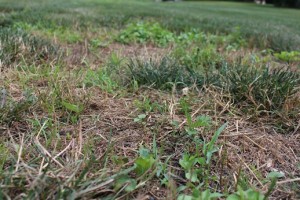 It’s an uncomfortable truth. Everyone has “that house” on their block. You know the one I’m talking about…their weeds infest other people’s lawns, it’s brown and gnarly looking, and it seems to be in a constant state of needing to be mowed. When it is mowed, it’s often so short that it kicks up dust and debris, sending a cloud of dry soil and weed particles drifting down the street. It’s the ugly lawn on the block!
It’s an uncomfortable truth. Everyone has “that house” on their block. You know the one I’m talking about…their weeds infest other people’s lawns, it’s brown and gnarly looking, and it seems to be in a constant state of needing to be mowed. When it is mowed, it’s often so short that it kicks up dust and debris, sending a cloud of dry soil and weed particles drifting down the street. It’s the ugly lawn on the block!
If I’ve just described your lawn, fear not! There is a way to turn your ugly lawn into the envy of the neighborhood. Follow these simple tips, no matter what condition your lawn is in, and you’ll see improvement.
What Kind of Grass Do I Have in My Lawn?
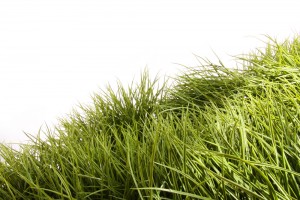 First, let’s start with the basics. Grasses in North America generally fall into one of two categories – warm-season grasses and cool-season grasses. Warm-season grasses (Zoysia, Bermuda, St. Augustine, Centipede, etc.) grow best where the climate is warm, like in Florida, Mississippi, and Texas.
First, let’s start with the basics. Grasses in North America generally fall into one of two categories – warm-season grasses and cool-season grasses. Warm-season grasses (Zoysia, Bermuda, St. Augustine, Centipede, etc.) grow best where the climate is warm, like in Florida, Mississippi, and Texas.
Cool-season grasses (Bluegrass, Perennial Ryegrass, and Fescue) grow best in cooler climates, like we typically experience here in Central Pennsylvania, and in New England, Michigan, and Wisconsin for example. These are the types that grow best here in Lancaster, York, Harrisburg, and Lebanon, PA. We’ll be dealing with cool-season grasses in this article.
Taking a Soil Test for Your Lawn
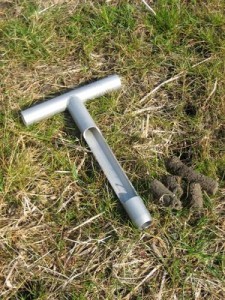 Your first step should be to have a soil test. Any reputable lawn care service should offer this, or you can often pick one up from a local garden center. Soil tests tell you exactly what is going on in your lawn. Why is that important? Every property is different.
Your first step should be to have a soil test. Any reputable lawn care service should offer this, or you can often pick one up from a local garden center. Soil tests tell you exactly what is going on in your lawn. Why is that important? Every property is different.
No two lawns, even in the same neighborhood, are the same. The difference between and ugly lawn and a beautiful once may be scientific. If your pH is too acidic or you are lacking in potassium, you will have difficulty gaining traction in your lawn’s progress toward a healthy, beautiful appearance.
Fixing Bare Areas in Your Lawn
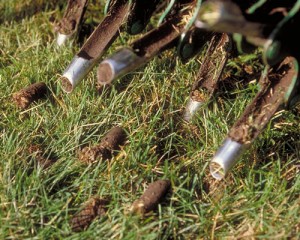 Next, it’s impossible to improve and ugly lawn where there is no grass present. You must have turfgrass to start with. If your lawn lacks turf coverage (i.e. large bare areas, places where weeds have taken over, uneven appearance, etc.) you will likely need to introduce and establish grass.
Next, it’s impossible to improve and ugly lawn where there is no grass present. You must have turfgrass to start with. If your lawn lacks turf coverage (i.e. large bare areas, places where weeds have taken over, uneven appearance, etc.) you will likely need to introduce and establish grass.
Core aeration and over-seeding is a good method to slightly improve an existing lawn, but sometimes more aggressive measures, like slice-seeding, are required for extremely thin or bare areas. Where topsoil is rocky or absent, topdressing might be the way to go. This is a process where a layer of new soil is introduced, so that turf has somewhere to properly root.
If you are unsure of what type of seeding is appropriate for your lawn, you should consult with a reputable lawn care company about the type of seeding necessary and the timing of your seeding job. As an FYI, for Lancaster, Lebanon, Harrisburg, and York, PA, fall is the best time to seed your lawn.
Lawn Care Maintenance Programs
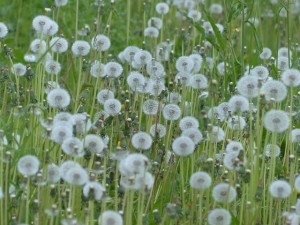 Once you have grass filled in, timely feeding and weed control becomes very important. You’ve got to maintain it if you want to keep it from returning to an ugly lawn. Both are equally important parts of a lawn care program – you want to feed your grass to encourage growth, but you don’t want the weeds competing for those nutrients.
Once you have grass filled in, timely feeding and weed control becomes very important. You’ve got to maintain it if you want to keep it from returning to an ugly lawn. Both are equally important parts of a lawn care program – you want to feed your grass to encourage growth, but you don’t want the weeds competing for those nutrients.
Regular applications of fertilizer and weed control, both pre-emergent (before they grow) and post-emergent (after they’ve grown in your lawn) are vital. This allows turf to thrive, while eliminating the undesired plant that would steal your lawn’s nutrition. Again, consulting with a professional about the timing and number of applications for your area is highly recommended.
Proper Mowing Practices
Once you’ve established turf, and you have your fertilization and weed control schedule in place for the season, you have to start thinking about cultural practices like mowing. How often should I mow? At what height should I mow? Should I bag my clippings or mulch them back into the lawn?
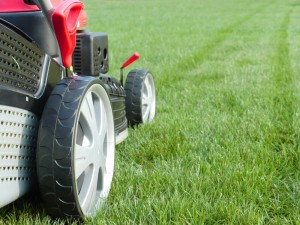 Your cool-season lawn should be mowed at no less than three inches AFTER it is mowed. Sometimes you will need to mow your lawn more than once a week. You NEVER want to mow off more than one-third of a blade of grass at one time. Doing so can put unneeded stress on your lawn.
Your cool-season lawn should be mowed at no less than three inches AFTER it is mowed. Sometimes you will need to mow your lawn more than once a week. You NEVER want to mow off more than one-third of a blade of grass at one time. Doing so can put unneeded stress on your lawn.
Measure how high you are mowing. Having your mower’s height adjustment at setting “3” doesn’t mean it’s three inches, as these setting vary by manufacturer. A good rule of thumb is to take your mower to a flat, level surface, like your garage floor, and make sure the bottom of the mower deck (the metal case that protects your feet from the turning blades) is up at least 2.5 inches. That’s more likely to ensure proper mowing height than relying on your mower’s height adjustment settings.
Mowing frequency will depend on the time of year and the amount of water your lawn gets. In the spring, when we have cooler temperatures, cool-season grasses will grow more rapidly.
In the summer, during that dormancy, they will grow less quickly, if at all. If grass is stressed during drought, delay mowing as this can stress out the lawn. When your lawn gets to be about four inches long is a good guiding principle.
Watering Your Lawn
What about watering my lawn? How much should I water? When should I water the lawn?
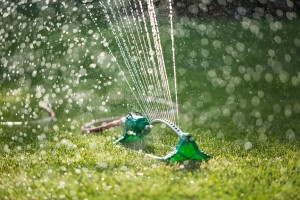 In our area, watering about an inch and a half per week is recommended. That’s easy enough to measure; put an empty tuna fish can a few yards away from your sprinkler, and turn it off when the can is full. If you have the ability to do so, slightly increasing the amount in the summer won’t hurt anything at all.
In our area, watering about an inch and a half per week is recommended. That’s easy enough to measure; put an empty tuna fish can a few yards away from your sprinkler, and turn it off when the can is full. If you have the ability to do so, slightly increasing the amount in the summer won’t hurt anything at all.
If you cannot water, most lawns will survive a brief period (3-4 weeks) of drought, as cool-season grasses go into dormancy during the summer’s hot, dry stretches. Most of it will bounce back in the fall. However, if grass plants don’t have water past a few weeks, it can start to damage the plants to the point where significant thinning of the lawn will happen.
When watering, do so early in the day if possible. That way, any excess moisture that isn’t absorbed has time to evaporate off of the grass blades. If you water later in the day, and that moisture doesn’t evaporate, you’re inviting a disease issue into your carefully cultivated lawn!
Other Lawn Care Challenges
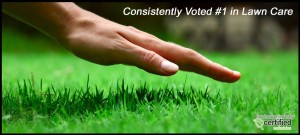 There are a number of other factors that factor into your turf’s health as well – sharpness of mower blades, environmental conditions, too much shade, and steep grade – the list can go on for a while.
There are a number of other factors that factor into your turf’s health as well – sharpness of mower blades, environmental conditions, too much shade, and steep grade – the list can go on for a while.
If you’re following the above practices and are still struggling, or you simply have questions, we would be more than happy to discuss your lawn’s needs, and partner with you to improve it. Please don’t hesitate to contact us!

